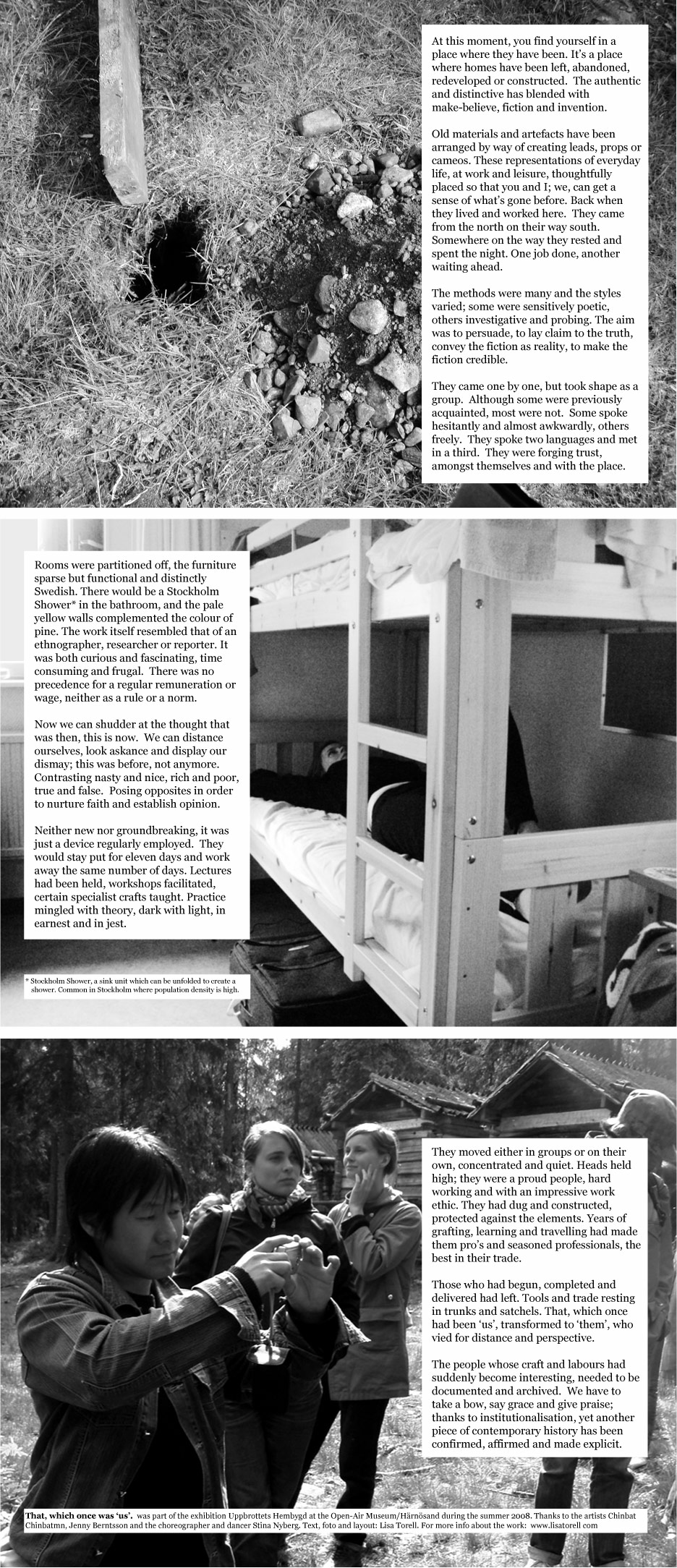
At this moment, you find yourself in a place where they have been. It’s a place where homes have been left, abandoned, redeveloped or constructed. The authentic and distinctive has blended with make-believe, fiction and invention.Old materials and artefacts have been arranged by way of creating leads, props or cameos. These representations of everyday life, at work and leisure, thoughtfully placed so that you and I; we, can get a sense of what’s gone before. Back when they lived and worked here. They came from the north on their way south.
Somewhere on the way they rested and spent the night. One job done, another waiting ahead.
The methods were many and the styles varied; some were sensitively poetic, others investigative and probing. The aim was to persuade, to lay claim to the truth, convey the fiction as reality, to make the fiction credible. They came one by one, but took shape as a group. Although some were previously acquainted, most were not. Some spoke hesitantly and almost awkwardly, others freely. They spoke two languages and met in a third. They were forging trust, amongst themselves and with the place.
Rooms were partitioned off, the furniture sparse but functional and distinctly Swedish. There would be a Stockholm Shower* in the bathroom, and the pale yellow walls complemented the colour of pine. The work itself resembled that of an ethnographer, researcher or reporter. It was both curious and fascinating, time consuming and frugal. There was no precedence for a regular remuneration or wage, neither as a rule or a norm. Now we can shudder at the thought that was then, this is now. We can distance ourselves, look askance and display our dismay; this was before, not anymore. Contrasting nasty and nice, rich and poor, true and false. Posing opposites in order to nurture faith and establish opinion.Neither new nor groundbreaking, it was just a device regularly employed. They would stay put for eleven days and work away the same number of days. Lectures had been held, workshops facilitated, certain specialist crafts taught. Practice mingled with theory, dark with light, in earnest and in jest.
*Stockholm Shower, a sink unit which can be unfolded to create a ...shower. Common in Stockholm where population density is high.
They moved either in groups or on their own, concentrated and quiet. Heads held high; they were a proud people, hard working and with an impressive work ethic. They had dug and constructed, protected against the elements. Years of grafting, learning and travelling had made them pro’s and seasoned professionals, the best in their trade.Those who had begun, completed and delivered had left. Tools and trade resting in trunks and satchels. That, which once had been ‘us’, transformed to ‘them’, who vied for distance and perspective.
The people whose craft and labours had suddenly become interesting, needed to be documented and archived. We have to take a bow, say grace and give praise; thanks to institutionalisation, yet another piece of contemporary history has been confirmed, affirmed and made explicit.
(That, which once was ‘us’. was part of the exhibition Uppbrottets Hembygd at the Open-Air Museum/Härnösand during the summer 2008. Thanks to the artists Chinbat Chinbatmn, Jenny Berntsson and the choreographer and dancer Stina Nyberg. Text, foto and layout: Lisa Torell. For more info about the work: www.lisatorell com )
........................
..............................
..............................